Effect of Mixing and Curing System on Carbon Fixation Amount and Performance of Circulating Fluidized Bed Fly Ash Cement Cementitious Material System
Abstract
:1. Introduction
2. Experiment
2.1. Raw Materials
2.2. Methods
2.2.1. Carbon Mixing Equipment
2.2.2. Experimental Scheme
2.3. Characterization of Carbon Sequestration
2.4. Preparation of Powder Samples
2.5. Characterization
3. Results and Discussion
3.1. CFA Mineralogy Analysis and Adsorption Properties
3.2. Effect of CO2 Mixing and Curing System on the Properties of Cementitious Materials
3.3. Study of Carbon Sequestration under Different Mixing and Curing Systems
3.4. Mineral Phase Analysis of Cementitious Materials with Different Mixing and Curing Systems
3.5. Micromorphology of Cementitious Materials during Hydration Process
3.6. Study on Factors Affecting Carbon Sequestration
3.7. Effect of Curing Temperature on Carbon Sequestration
4. Conclusions
Supplementary Materials
Author Contributions
Funding
Institutional Review Board Statement
Informed Consent Statement
Data Availability Statement
Conflicts of Interest
References
- Yi, D.; Du, H.; Li, Y.; Gao, Y.; Liu, S.; Xu, B.; Huang, H.; Kang, L. Study on Green Controllable Preparation of Coal Gangue-Based 13-X Molecular Sieves and Its CO2 Capture Application. Coatings 2023, 13, 1886. [Google Scholar] [CrossRef]
- Li, Q.; Chen, Z.; Zhang, J.-T.; Liu, L.-C.; Li, X.; Jia, L. Positioning and revision of CCUS technology development in China. Int. J. Greenh. Gas Control 2016, 46, 282–293. [Google Scholar] [CrossRef]
- Woodward, A.; Smith, K.R.; Campbell-Lendrum, D.; Chadee, D.D.; Honda, Y.; Liu, Q.; Olwoch, J.; Revich, B.; Sauerborn, R.; Chafe, Z. Climate change and health: On the latest IPCC report. Lancet 2014, 383, 1185–1189. [Google Scholar] [CrossRef] [PubMed]
- Chen, T.; Gao, X. Effect of carbonation curing regime on strength and microstructure of Portland cement paste. J. CO2 Util. 2019, 34, 74–86. [Google Scholar] [CrossRef]
- Yu, X.; Ai, T.; Wang, K. Application of nanogenerators in acoustics based on artificial intelligence and machine learning. APL Mater. 2024, 12, 020602. [Google Scholar] [CrossRef]
- Sanna, A.; Uibu, M.; Caramanna, G.; Kuusik, R.; Maroto-Valer, M.M. A review of mineral carbonation technologies to sequester CO2. Chem. Soc. Rev. 2014, 43, 8049–8080. [Google Scholar] [CrossRef]
- Kang, L.; Liu, S.-F.; Yi, D.-W.; Wang, K.; Du, H.-L.; Huang, H.-Q.; Chen, P. Renewable conversion of coal gangue to 13-X molecular sieve for Cd2+-containing wastewater adsorption performance. Rare Met. 2024, 43, 702–710. [Google Scholar] [CrossRef]
- Zhang, D.; Ghouleh, Z.; Shao, Y. Review on carbonation curing of cement-based materials. J. CO2 Util. 2017, 21, 119–131. [Google Scholar] [CrossRef]
- Bertos, M.F.; Simons, S.J.R.; Hills, C.D.; Carey, P.J. A review of accelerated carbonation technology in the treatment of cement-based materials and sequestration of CO2. J. Hazard. Mater. 2004, 112, 193–205. [Google Scholar]
- Wang, C.; Jia, L.; Tan, Y.; Anthony, E.J. Carbonation of fly ash in oxy-fuel CFB combustion. Fuel 2008, 87, 1108–1114. [Google Scholar] [CrossRef]
- Liu, W.; Su, S.; Xu, K.; Chen, Q.; Xu, J.; Sun, Z.; Wang, Y.; Hu, S.; Wang, X.; Xue, Y.; et al. CO2 sequestration by direct gas–solid carbonation of fly ash with steam addition. J. Clean. Prod. 2018, 178, 98–107. [Google Scholar] [CrossRef]
- Mazzellaa, A.; Erricob, M.; Spigac, D. CO2 uptake capacity of coal fly ash: Influence of pressure and temperature on direct gas-solid carbonation. J. Environ. Chem. Eng. 2016, 4, 4120–4128. [Google Scholar] [CrossRef]
- Abdel-Gawwad, H.A.; Hassan, H.S.; Asquez-García, S.R.V.; Israde-Alcantara, I.; Ding, Y.C.; Martinez-Cinco, M.A.; El-Aleem, S.A.; Khater, H.M.; Tawfik, T.A.; El-Kattan, I.M. Towards a clean environment: The potential application of eco-friendly magnesia-silicate cement in CO2 sequestration. J. Clean. Prod. 2020, 252, 119875. [Google Scholar] [CrossRef]
- Czarnecki, L.; Woyciechowski, P. Modelling of concrete carbonation; Is it a process unlimited in time and restricted in space? Bull. Pol. Acad. Sci. Tech. Sci. 2015, 63, 43–54. [Google Scholar] [CrossRef]
- Behfarnia, K.; Rostami, M. An assessment on parameters affecting the carbonation of alkali-activated slag concrete. J. Clean. Prod. 2017, 157, 1–9. [Google Scholar] [CrossRef]
- Kashef-Haghighi, S.; Shao, Y.; Ghoshal, S. Mathematical modeling of CO2 uptake by concrete during accelerated carbonation curing. Cem. Concr. Res. 2015, 67, 1–10. [Google Scholar] [CrossRef]
- Liu, W.; Li, Y.-Q.; Tang, L.-P.; Dong, Z.-J. XRD and 29Si MAS NMR study on carbonated cement paste under accelerated carbonation using different concentration of CO2. Mater. Today Commun. 2019, 19, 464–470. [Google Scholar] [CrossRef]
- Glasser, F.P.; Pedersen, J.; Goldthorpe, K.; Atkins, M. Solubility reactions of cement components with NaCl solutions: I. Ca(OH)2 and C-S-H. Adv. Cem. Res. 2005, 17, 57–64. [Google Scholar] [CrossRef]
- Carroll, J.J.; Slupsky, J.D.; Mather, A.E. The solubility of carbon dioxide in water at low pressure. J. Phys. Chem. Ref. Data 1991, 20, 1201–1209. [Google Scholar] [CrossRef]
- Shi, C.J.; Wu, Y.Z. Studies on some factors affecting CO2 curing of lightweight concrete products. Resour. Conserv. Recycl. 2008, 52, 1087–1092. [Google Scholar]
- Chen, T.F.; Gao, X.J.; Qin, L. Mathematical modeling of accelerated carbonation curing of Portland cement paste at early age. Cem. Concr. Res. 2019, 120, 187–197. [Google Scholar] [CrossRef]
- Hong, Y.J.; Lv, X.; Wang, K. Application of triboelectric nanogenerator in self-powered motion detection devices: A review. APL Mater. 2024, 12, 070601. [Google Scholar]
- Steinour, H.H. Some effects of carbon dioxide on mortars and concrete-discussion. J. Am. Concr. Inst. 1959, 30, 905–907. [Google Scholar]
- Sharma, D.; Goyal, S. Accelerated carbonation curing of cement mortars containing cement kiln dust: An effective way of CO2 sequestration and carbon footprint reduction. J. Clean. Prod. 2018, 192, 844–854. [Google Scholar] [CrossRef]
- Shoaib, M.M.; Balaha, M.M.; Abdel-Rahman, A.G. Influence of cement kiln dust substitution on the mechanical properties of concrete. Cem. Concr. Res. 2000, 30, 371–377. [Google Scholar] [CrossRef]
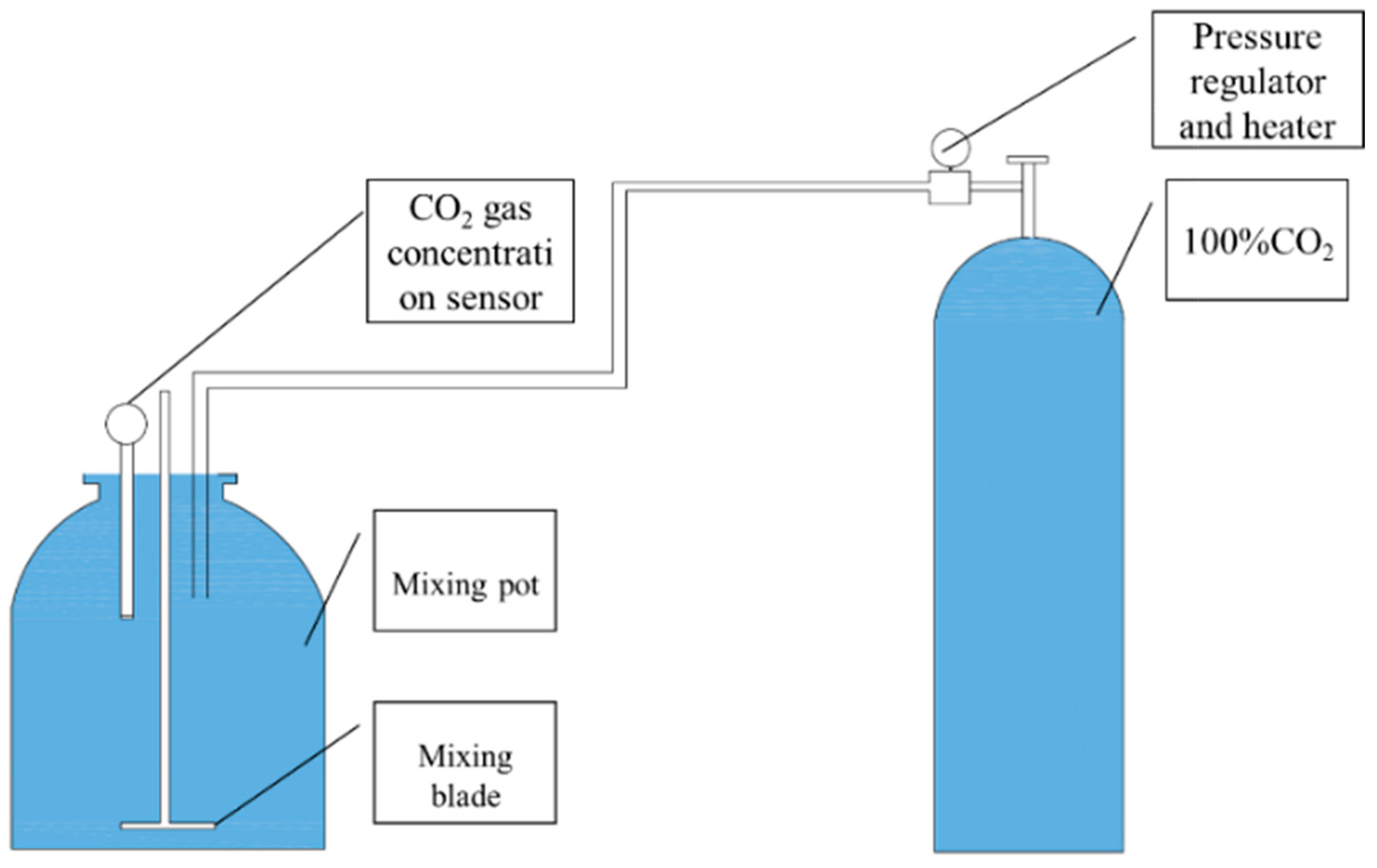


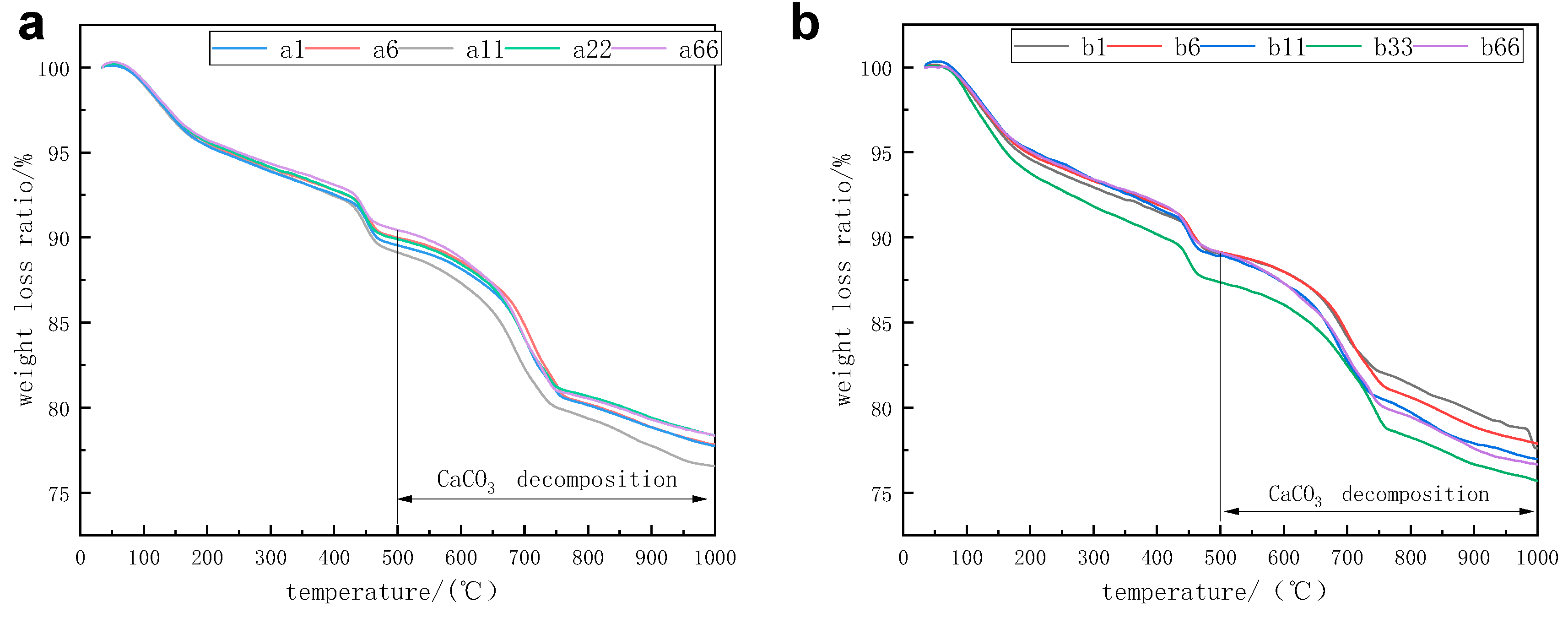
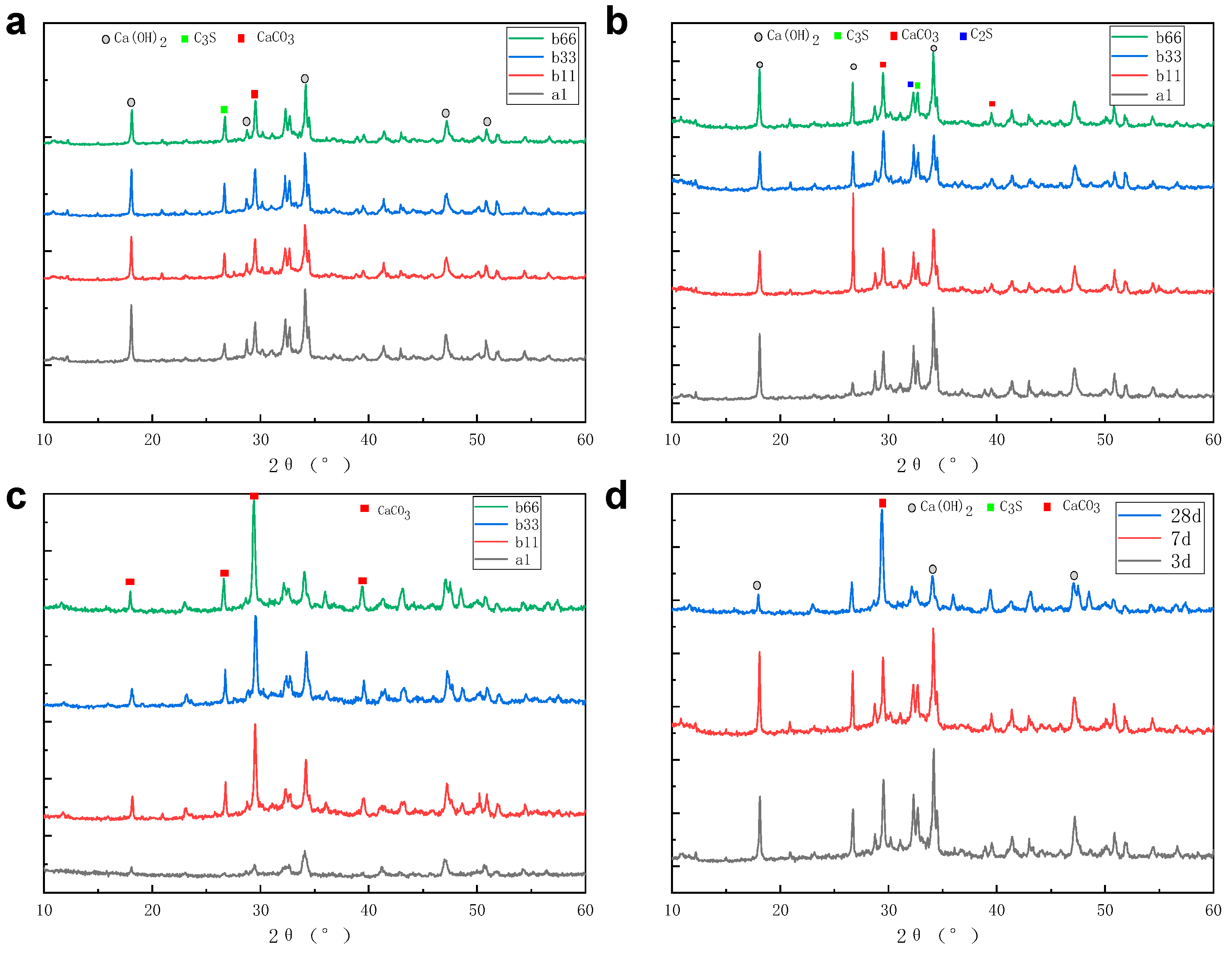
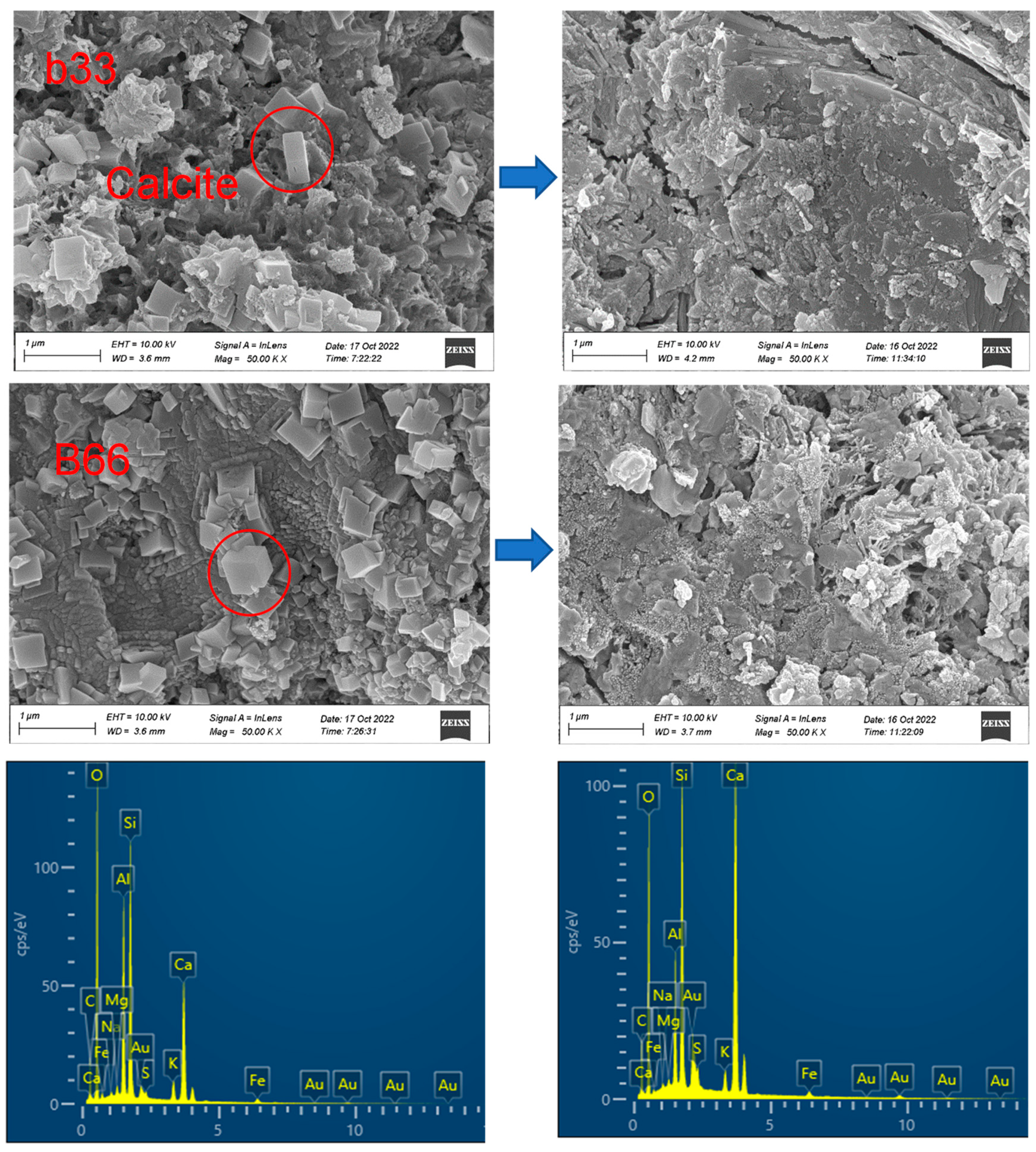
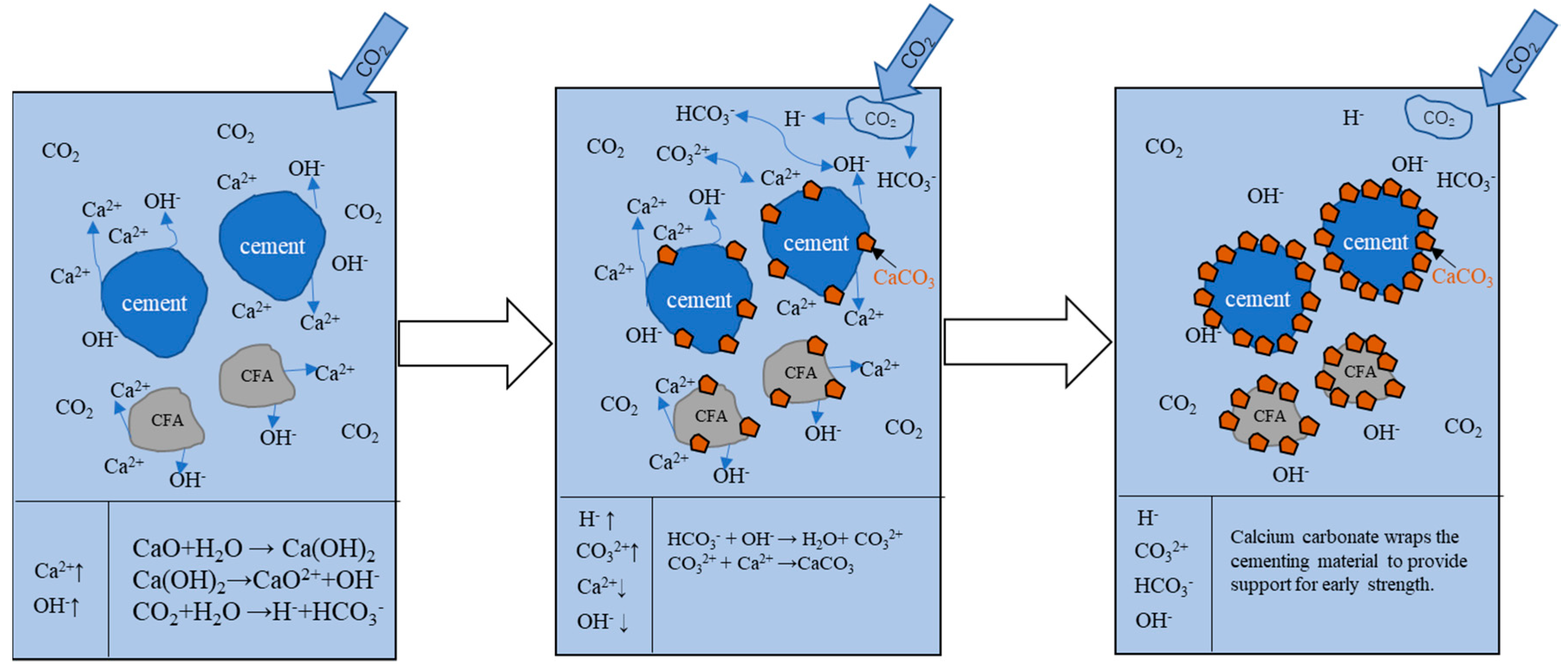
| Group | a1 | a6 | a11 | a22 | a66 | b1 | b6 | b11 | b33 | b66 |
|---|---|---|---|---|---|---|---|---|---|---|
| Carbon sequestration/% | 9.34 | 11.88 | 11.81 | 11.54 | 11.96 | 11.45 | 11.24 | 11.95 | 11.66 | 12.45 |
| Test No. | Fly Ash Content | Water-Cement Ratio | Carbon Concentration | 3-Day Compressive Strength | 7-Day Compressive Strength | 28-Day Compressive Strength | Fixed Carbon Content |
|---|---|---|---|---|---|---|---|
| 1 | 25% | 0.4 | 20% | 34 | 43.2 | 52.5 | 11.07 |
| 2 | 25% | 0.45 | 25% | 22.4 | 32.6 | 42.6 | 10.85 |
| 3 | 25% | 0.5 | 30% | 24.5 | 29.3 | 33.3 | 13.92 |
| 4 | 30% | 0.4 | 25% | 40.2 | 46.3 | 60.8 | 8.88 |
| 5 | 30% | 0.45 | 30% | 26 | 35.2 | 40.8 | 14.14 |
| 6 | 30% | 0.5 | 20% | 23.3 | 28.1 | 42.7 | 9.16 |
| 7 | 35% | 0.4 | 30% | 24.5 | 31.6 | 43.2 | 16.27 |
| 8 | 35% | 0.45 | 20% | 28.5 | 40.5 | 49.6 | 11.4 |
| 9 | 35% | 0.5 | 25% | 17.7 | 25 | 31.2 | 13.98 |
| Temperature/°C | 20 | 30 | 40 | 50 | 60 |
|---|---|---|---|---|---|
| Fixed carbon content/% | 16.27 | 19.64 | 20.70 | 21.29 | 19.84 |
Disclaimer/Publisher’s Note: The statements, opinions and data contained in all publications are solely those of the individual author(s) and contributor(s) and not of MDPI and/or the editor(s). MDPI and/or the editor(s) disclaim responsibility for any injury to people or property resulting from any ideas, methods, instructions or products referred to in the content. |
© 2024 by the authors. Licensee MDPI, Basel, Switzerland. This article is an open access article distributed under the terms and conditions of the Creative Commons Attribution (CC BY) license (https://creativecommons.org/licenses/by/4.0/).
Share and Cite
Zhang, H.; Li, H.; Wang, K. Effect of Mixing and Curing System on Carbon Fixation Amount and Performance of Circulating Fluidized Bed Fly Ash Cement Cementitious Material System. Coatings 2024, 14, 936. https://doi.org/10.3390/coatings14080936
Zhang H, Li H, Wang K. Effect of Mixing and Curing System on Carbon Fixation Amount and Performance of Circulating Fluidized Bed Fly Ash Cement Cementitious Material System. Coatings. 2024; 14(8):936. https://doi.org/10.3390/coatings14080936
Chicago/Turabian StyleZhang, Hao, Hui Li, and Kai Wang. 2024. "Effect of Mixing and Curing System on Carbon Fixation Amount and Performance of Circulating Fluidized Bed Fly Ash Cement Cementitious Material System" Coatings 14, no. 8: 936. https://doi.org/10.3390/coatings14080936







